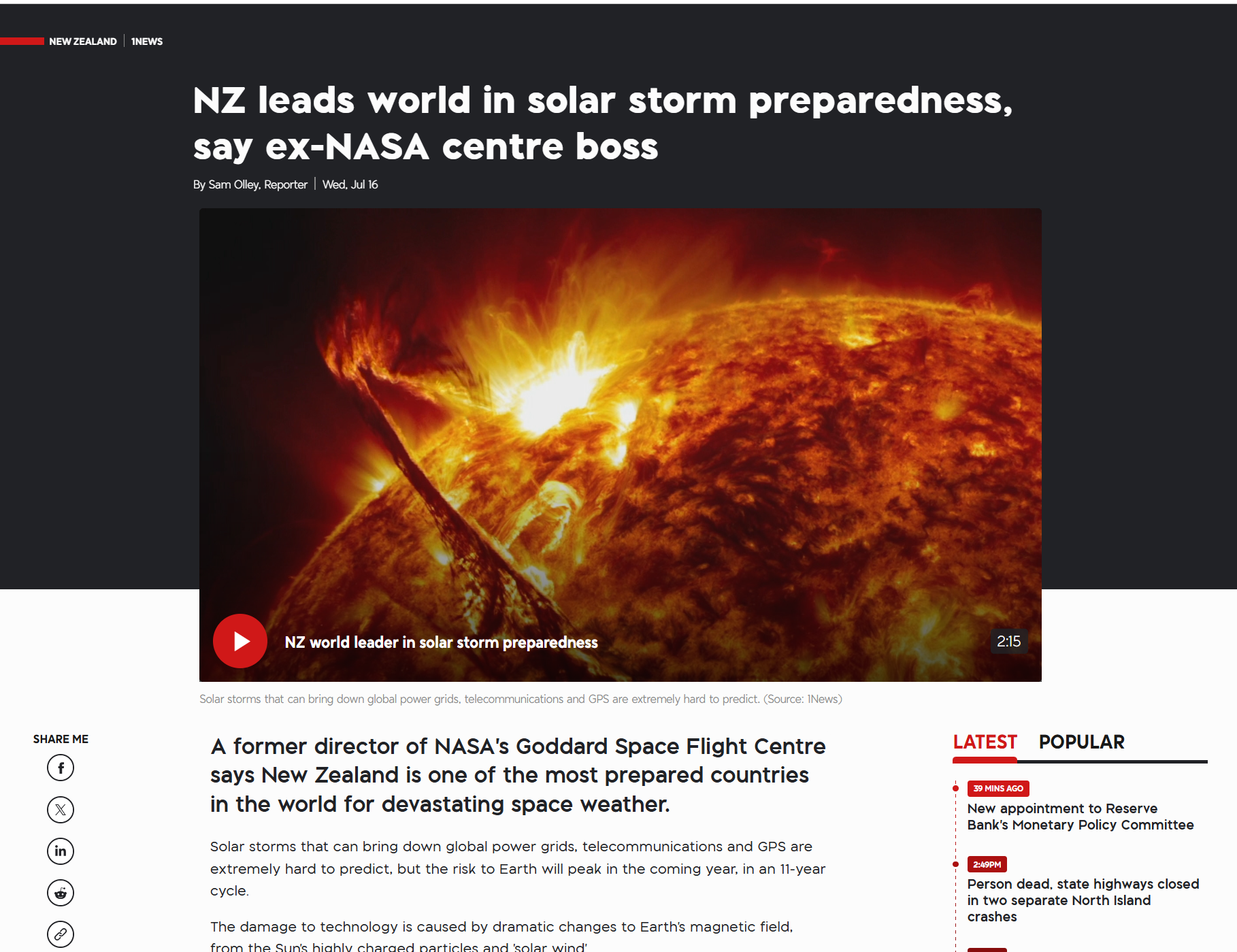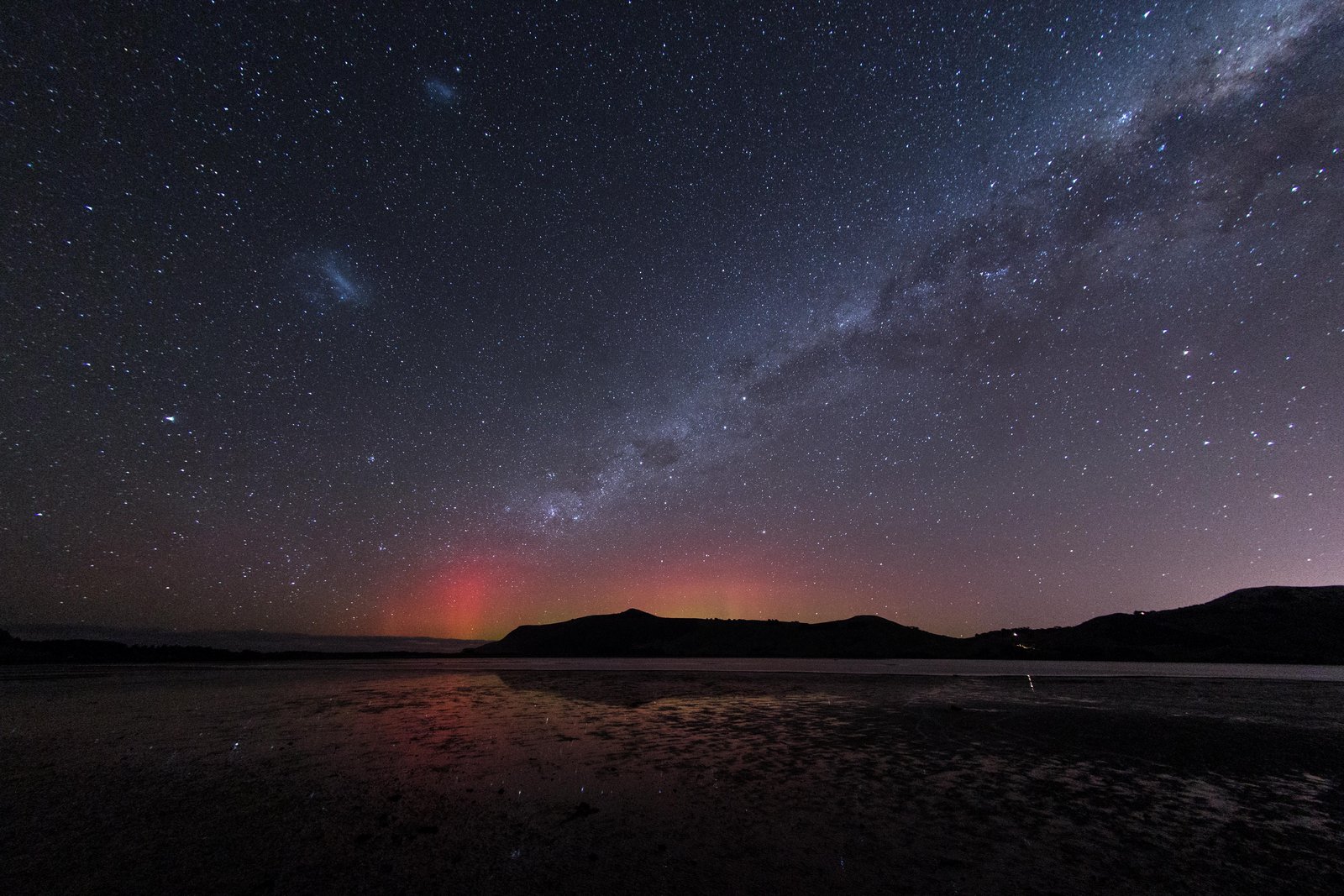Dr Michelle Thaller, who has just retired from NASA after 27 years, visited Dunedin as a special guest of the New Zealand International Science Festival in June – July 2025. While she was visiting she caught up with the Solar Tsunamis project at our 2025 Annual Programme Meeting, and spoke to 1News about New Zealand’s world-leading work in planning for and mitigating the hazard posed by space weather:

…”The Sun has a natural 11-year cycle and right now, we’re right at the top of that [space weather] activity, so this is something we’re very concerned about right now.”
She has previously briefed presidents like Barack Obama in person in her roles at NASA where she was an assistant director of the Goddard centre, and has just visited Aotearoa for the New Zealand International Science Festival.
Thaller said eventually, “it’s going to happen someday that we’re going to get another direct hit [on Earth]” from a solar storm.
“It will very likely happen sometime in my lifetime that we at least have a geomagnetic storm that is risky, and the amazing thing is you can protect from these, and New Zealand leads the world.”
This, she said, is because of our space weather response plan – which was released last year by the National Emergency Management Agency (NEMA).
For the past 18 months, emergency services, scientists and lifeline utilities like Transpower have ramped up work on the plan that allows us to shut down our grid for up to around six days, to prevent damage while a solar storm passes.
NEMA chief science advisor Tom Wilson told 1News: “For a geomagnetic storm event, where we may have several hours or even tens of hours that an event is coming, it may not only be until the last 10 to 15 minutes prior to that event hitting Earth where we really know how big or severe that that event may be. And that’s a very short decision-making window.”
Transpower’s grid and system operations manager Matt Copland added: “If we didn’t take action and we permanently damaged that equipment, it can take 18 months or longer to actually get that out of factories from around the world”.
In that scenario, many countries would potentially need the same replacements, causing long-term outages.
Thaller said: “It’s something that could kill thousands of people because of the indirect effects of not having electricity. It’s something we need to be ready for.”
You can watch a video of Dr Michelle Thaller’s presentation at the NZISF 2025 here:


